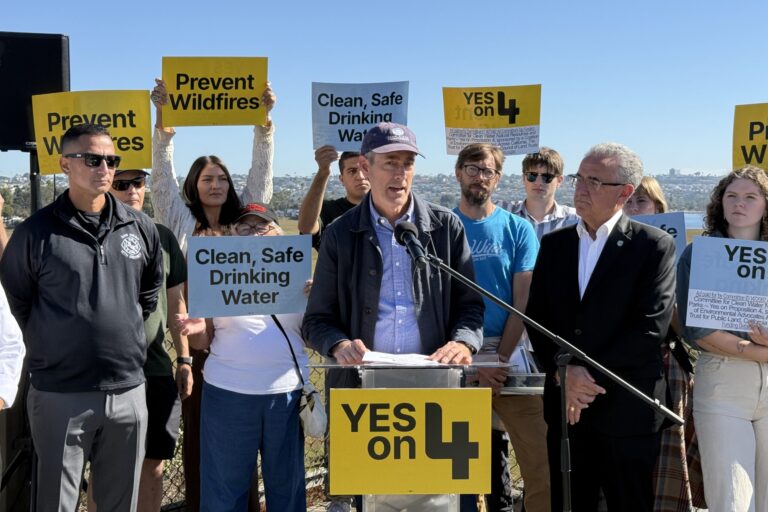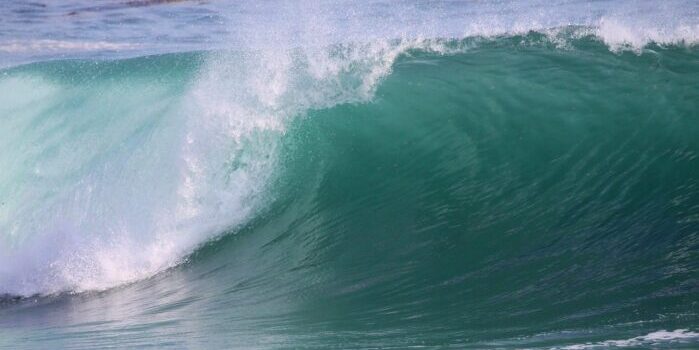Earlier this month, I attended a meeting of the San Diego Conservation Action Committee on the State of California’s plan to make water conservation a way of life, and was disappointed to hear a familiar refrain from our regional water wholesaler, the San Diego County Water Authority: why is the State asking us to conserve water when we can build our way out of our water supply woes?
It was a position that the Water Authority took at the height of one of the worst droughts California has ever seen. Now, as the State considers legislation to make conservation a way of life in California, the Water Authority has mounted a full-fledged lobbying campaign to overhaul the painstakingly-developed water conservation and efficiency framework.
For months, San Diego Coastkeeper and our partners have worked alongside water suppliers, businesses, state agencies, and other stakeholders to fulfill Governor Brown’s vision for a sustainable water future in Executive Order B-37-16, to maximize efficiency and conservation and minimize water waste. Legislation is required to implement certain elements of that framework, and lawmakers are currently considering alternative approaches to manage California’s limited water supplies for long-term reliability.
The new framework puts a long overdue emphasis on water conservation and drought response planning while allowing flexibility for water agencies to determine how to best serve the needs of local customers. Each supplier would have an achievable target based on efficiency standards for indoor and outdoor water use, and leak repair, taking into account variables like population and climate to address local needs.
It is imperative that we make our region more resilient to drought and future water shortages which are expected to result from a changing climate. Yet the Water Authority has continuously attempted to water down the well-vetted approach to make conservation a way of life. Its efforts have sought to delay adoption of sensible efficiency targets, undermine the development of a uniform methodology for setting targets, exempt recycled water from efficiency standards, and limit accountability and enforcement. This approach may benefit the Water Authority, but it doesn’t benefit San Diegans.
On behalf of our thousands of members throughout our region, San Diego Coastkeeper has been working for over twenty-two years to make San Diego County more resilient to climate change, to protect our waters, and to keep our community progressing and thriving. Unfortunately, the position the Water Authority has taken on conservation measures does not – and should not – represent the interests of San Diegans who care about our waters – and water rates. While San Diegans have made considerable progress in conserving water over the past twenty-five years, our region – and the State – must continue to build upon that success in order to adapt to the expected impacts of climate change and population growth. In the Water Authority’s own words, “water conservation is the cheapest new source of water.”[1] As such, meaningful conservation targets and measures incorporated within the framework should be prioritized above any and all other water supplies, each of which carries tremendous environmental and economic costs.
Here is our agenda to make water conservation a way of life in San Diego:
-
Don’t delay or start over.
The Water Authority wants to start a new stakeholder process to establish urban water use targets, but the State’s framework already reflects substantial public input, including a broadly representative Urban Advisory Group. A new stakeholder process would unnecessarily delay implementation of meaningful standards and targets—potentially by three years or more. We simply cannot afford to wait that long.
-
Base water conservation targets on efficient use.
The approach that the Water Authority has championed specifies that the new stakeholder process should build upon the existing requirements that the state achieve a twenty percent reduction in urban water use by 2020. Experience has shown that differing conditions across the state make it hard to come up with a workable baseline from which to calculate a percentage reduction. In order to be consistent with the State’s proposal, adopted legislation should direct the State Water Board to develop a single method to calculate targets based on standards of efficient water use, with input from a stakeholder group, by a date certain. Basing new targets on efficiency means that agencies that have invested in conservation will receive credit for previous conservation. We believe that a uniform method for setting targets is central to the State’s framework. Using the same standards for efficiency statewide means that the approach will be fair. It will also be flexible, allowing each water supplier to meet its water use target by means it determines to be locally appropriate. Furthermore, the water use targets are proposed to be dynamic, which means that if the population grows or temperatures rise, the water use targets would also increase.
-
Ensure recycled water is used efficiently.
The Water Authority’s approach would create a massive loophole in future water efficiency by providing a thirty percent credit towards meeting the target for use of recycled water. The State of California already provides numerous incentives for investments in recycled water, including $625 million in funding from Proposition 1. When the Board made low interest loans available for water recycling projects from the State Revolving Fund, applications far outpaced existing funding, demonstrating that there is already substantial interest in developing potable recycled water supplies. Water efficiency and water recycling are complementary – not competing – strategies to achieve a safe, affordable, and locally-reliable water system. Using water efficiently is generally the most cost-effective, environmentally-sound, and fastest way to meet our water needs. It saves energy, reduces greenhouse gas emissions, and helps to stretch available supplies so that we can defer or even prevent the need to build costly new water infrastructure. With climate change increasing the variability of precipitation and impacting water supplies, it is critical for California to ensure that all water supplies, including recycled water, are used efficiently. Including recycled water in the efficiency standards helps to protect ratepayers and promote affordability, reducing unnecessary investments in costly new infrastructure. In short, water efficiency and savings should come no matter what the source. Our wallets and our environment will both benefit when conservation is applied across the board.
-
Trust, but verify.
In order to make sure everyone does their part, we need effective enforcement for water efficiency targets. The Water Authority’s approach would delay enforcement and hamstring the ability of the State Water Board to ensure efficiency targets are met. The Board should have progressive enforcement authority, as well as the ability to update the standards as changing circumstances dictate without returning to the legislature.
California has been reeling between extremes of drought and flood. Climate change models forecast that we will continue to see these extreme conditions. It is imperative that the State finalize and implement a strong and consistent conservation and efficiency framework to help assure a resilient and secure water future.
San Diego Coastkeeper will continue to work with our environmental partners, state agencies, the Governor’s office, and those water agencies who support the new conservation framework to make water conservation a way of life in San Diego and beyond.
[1] San Diego County Water Authority “Blueprint for Water Conservation FY 2007-2012, May 2007 Public Draft”. Accessed July 2017 at: https://www.sdcwa.org/sites/default/files/blueprint-waterconservaton.pdf
















